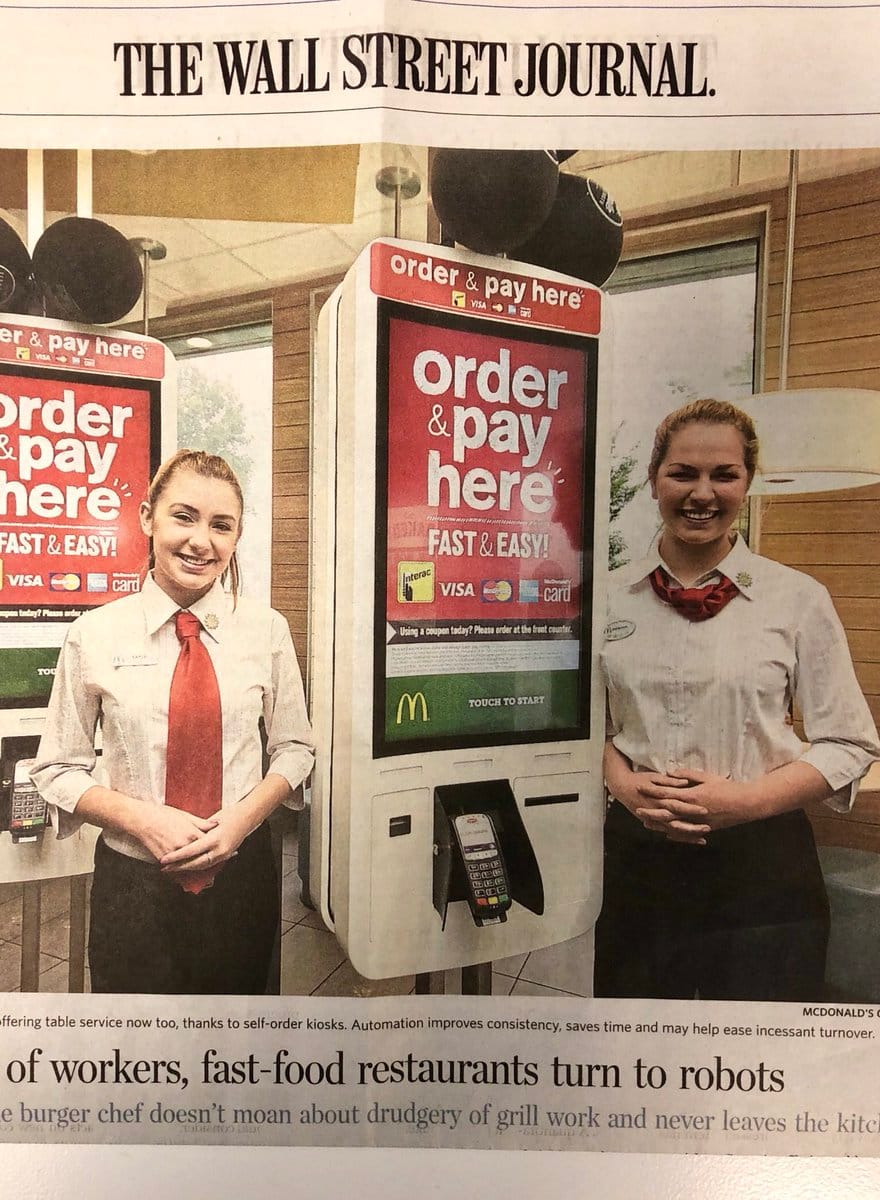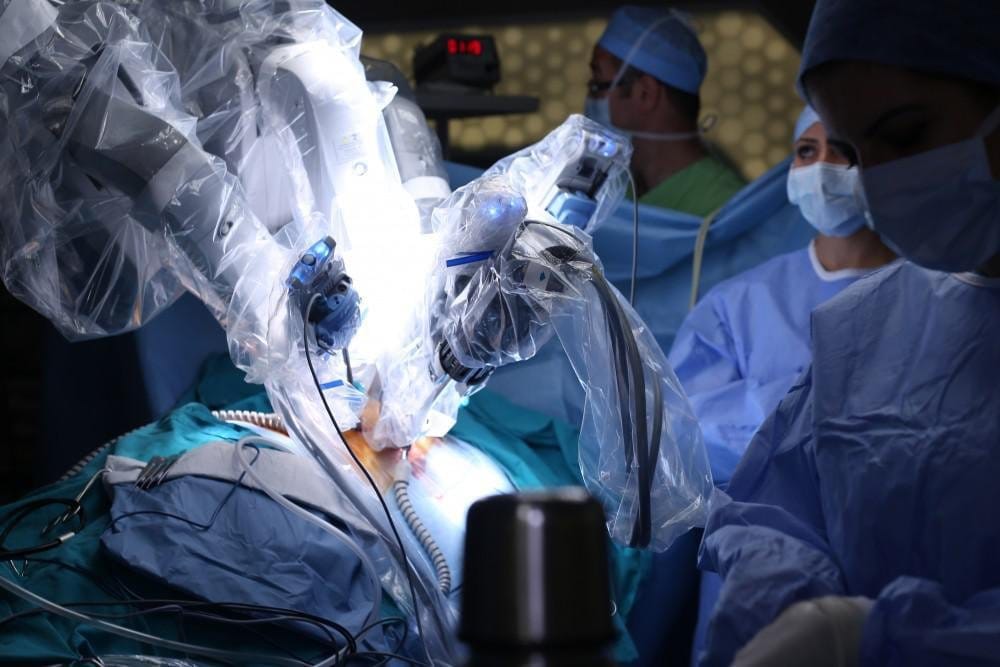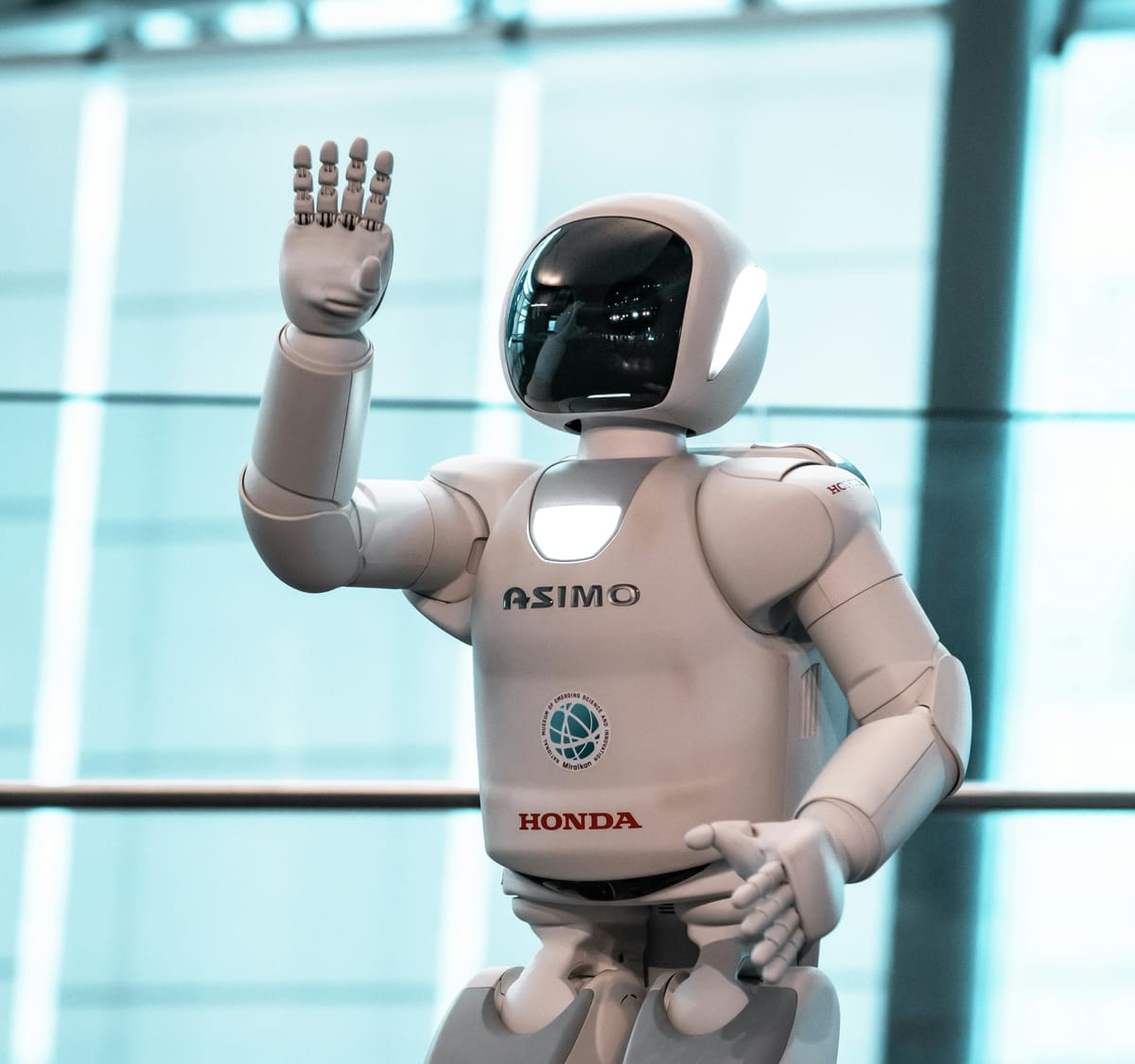"Beep boop... project update in 5 minutes," announces your new coworker – not over Slack, but from their charging station next to your desk. Sound like science fiction? Think again.
Automation is no longer confined to factory floors or self-checkout lanes. It's creeping into offices, creative studios, kitchens and even operating rooms. Robots are increasingly becoming our colleagues, reshaping how we work and collaborate.
This blog post isn't about fearing a robot uprising (yet). It's about understanding how this robotic revolution could impact you, whether you're a software developer, a medical practitioner, a teacher, or anywhere in between. We'll delve into the potential benefits of robotic coworkers – efficiency, safety, new opportunities – as well as the drawbacks, like job displacement and the unfair competition.
The Rise of the Machines: Automation Trends
You might have noticed self-checkout kiosks replacing cashiers at McDonalds or even robots delivering room service at your favorite hotel. Don't be surprised to learn that this isn't just a trend; it's a full-fledged revolution. Recent studies show a 159% increase in the adoption of industrial robots in the past decade alone. Major corporations like Amazon and Walmart are heavily investing in robotics, employing warehouse robots for sorting and packing orders. Even healthcare isn't immune, with robots assisting in surgeries and providing care in hospitals.

Current Advancements
Every year, new companies secure funds from Venture Capitals to automate real-world tasks. Companies like Miso Robotics are creating robots that can flip burgers and fry food in fast-food kitchens. In addition to their burger-flipping robot, Flippy, they have developed other innovative solutions such as the autonomous kitchen assistant, Flippy 2, which is capable of working a full fry station without human intervention.
Cafe X, a San Francisco-based company founded in 2015 by Henry Hu is already using robot baristas to serve up your morning coffee, ensuring the same high-quality latte art you’d expect from your favorite local baristas. Additionally, they utilize recognized and trusted coffee equipment instead of lower-quality, vending machine-like devices. This combination guarantees both the artistic presentation and the rich flavor of a professionally brewed cup of coffee.
Cafe X making a fresh cup of cafe latte!
Meanwhile, Softbank Robotics’ Whiz is autonomously vacuuming office floors across the country, and according to a case study, it did a better clean while removing 100s of man-hours. These autonomous vacuum cleaners are equipped with advanced sensors and artificial intelligence, allowing them to navigate complex environments and clean efficiently without human intervention.
In healthcare, Intuitive Surgical's da Vinci robot is assisting in surgeries, while Aethon's TUG robots are delivering medications and supplies in hospitals. These aren't just futuristic concepts; they're happening now.

The question isn't if automation will impact your industry, but when and how.
The Economics of Robots Taking White-collar Jobs
The advent of robotics in white-collar sectors is no longer a distant possibility but a looming reality. The economic efficiency of robots replacing human employees in these roles is a crucial consideration. Historically, the progression of technology has shown that what starts as expensive and experimental eventually becomes affordable and commonplace. This trend is encapsulated in Moore’s Law, which observes that the number of transistors on a microchip doubles approximately every two years, leading to a continuous drop in computing costs. Essentially, technology gets cheaper and more powerful over time.
In the early 2000s, the idea of robots performing complex tasks was largely confined to manufacturing floors and speculative fiction. However, companies like IBM and Google have paved the way for a new era where robots are not only feasible but increasingly efficient in performing white-collar tasks. The economic efficiency of replacing white-collar jobs with robots hinges on the initial investment in technology, the operational costs, and the relative savings compared to human salaries.
In a first-world country, where the average salary for a white-collar worker is substantial, the break-even point for robotic replacement becomes a crucial consideration. According to a McKinsey report, the total cost of ownership for advanced robots is decreasing, aligning with Moore’s Law predictions. They estimate that by 2030, the cost of a sophisticated service robot could be less than the annual salary of a human employee performing similar tasks.
Drawing parallels with historical events, consider the automation of manufacturing in the mid-20th century. Initially, the high cost of industrial robots meant that only the largest factories could afford them. However, as the technology improved and costs dropped, smaller factories also adopted automation, leading to widespread economic benefits and productivity gains. The same trajectory can be expected for white-collar robots.
By the mid-2030s, the economic efficiencies gained from deploying robots in white-collar roles will be undeniable. The convergence of decreasing technology costs, driven by Moore’s Law, and the rising expense of human labor, especially in developed countries, sets the stage for a significant shift. Understanding these economic dynamics will be crucial in navigating the evolving landscape of work.
Why do we need physical robots in offices?
Think back to the industrial revolution. Machines didn't replace humans entirely, but instead, transformed how we worked. Now, envision a similar revolution in the office space, where physical robots aren't merely automating tasks, but rather, augmenting our capabilities and changing our relationship with work.
Software automation has undoubtedly streamlined numerous processes, but it operates within the digital realm. Robots, on the other hand, can interact with the physical world in ways that feel more natural to us. Imagine a robotic assistant delivering documents, setting up meeting rooms, or even offering a comforting presence during stressful times. Cobalt Robotics has already deployed security robots in offices, proving that the physical presence of a machine can enhance security in ways software alone cannot.
Consider the realm of compliance and data privacy – areas where human error can have disastrous consequences. Robots, unlike their human counterparts, are immune to biases and distractions. They can tirelessly monitor data flows, enforce access controls, and ensure regulatory compliance. A robot won't accidentally leave a sensitive file on a personal computer or leak sensitive user credentials during a late night discord argument. While software can play a role in these areas, a physical robot can provide an additional layer of protection that's both tangible and reassuring.
Beyond the office, think about industries where physical robots are already making a difference. Boston Dynamics' Spot robot is being used in construction sites for tasks that are too dangerous or repetitive for humans. In healthcare, robots like Diligent Robotics' Moxi are assisting nurses with routine tasks, freeing them up to focus on patient care. These examples demonstrate that robots can take on risky jobs, work tirelessly around the clock, and ultimately, allow us to focus on what we do best: thinking, creating, and innovating.
Potential Negative Impacts
The shift towards robotic workforce can create an uneven playing field. You're no longer just competing against your colleagues; you're up against machines that don't need sleep, breaks, or healthcare benefits. This can lead to an unhealthy work environment where you're constantly pushing yourself to match the robot's productivity. Remember the Industrial Revolution? It brought about immense technological advancements but also led to worker exploitation and social unrest. Are we on the brink of a similar scenario?

The allure of cost-effective, tireless robotic workers could diminish the value placed on human employees. Companies might prioritize automation over human capital, leading to job losses and economic instability. This isn't just about numbers; it's about people's livelihoods. Furthermore, an office filled with robots lacks the empathy and understanding that human colleagues bring. The camaraderie, the shared experiences, the ability to relate to each other's struggles – these are uniquely human traits that robots can't replicate.
While automation may seem like an inevitable part of progress, it's crucial to consider its potential negative impacts. We need to strike a balance between technological advancement and human well-being. The future of work shouldn't be a race against machines, but a collaboration where technology complements human skills, not replaces them.
What It Means for You: Preparing for the Future
In the face of accelerating automation and artificial intelligence, you'll find yourself at a crossroads: adapt or be left behind. Lifelong learning isn't just a buzzword; it's your survival strategy. Machines excel at repetitive tasks, data analysis, and even some forms of decision-making. To stay ahead, you must constantly update your skills, particularly those related to AI and automation. Think of it as a hierarchy: machines execute, you command.
Your advantage lies in uniquely human skills. Creativity, critical thinking, emotional intelligence, and complex problem-solving are your currency in the automated economy. These are the skills machines can't replicate – at least not yet. Embrace change and see the evolving job market as an opportunity for growth. Focus on cultivating and applying these uniquely human skills, and you'll not only survive but thrive. After all, the future belongs to those who adapt, innovate, and lead the way in this new era of human-machine collaboration.
Conclusion
The rise of robots in the workplace isn't just happening; it's here, and it's changing the way we work faster than ever. From fast-food joints to operating rooms, our new mechanical colleagues are enhancing efficiency, keeping us safe, and opening up exciting new possibilities. While some worry about job displacement and a future of robotic overlords (thanks, Hollywood!), the reality is far more nuanced – and potentially, a lot more fun.
Imagine a workplace where tireless robots handle mundane tasks, freeing us to focus on creativity, innovation, and what we do best. Picture collaborating with a robot that can analyze data at lightning speed, take our ideas to production in minutes, or even crack a joke to lighten the mood. Sure, there will be challenges to navigate, such as ensuring fair compensation, job availability, and reskilling for new roles. However, the potential for a brighter, more productive, and enjoyable work life is within reach. The key is making the right decisions now and preparing ourselves properly.

